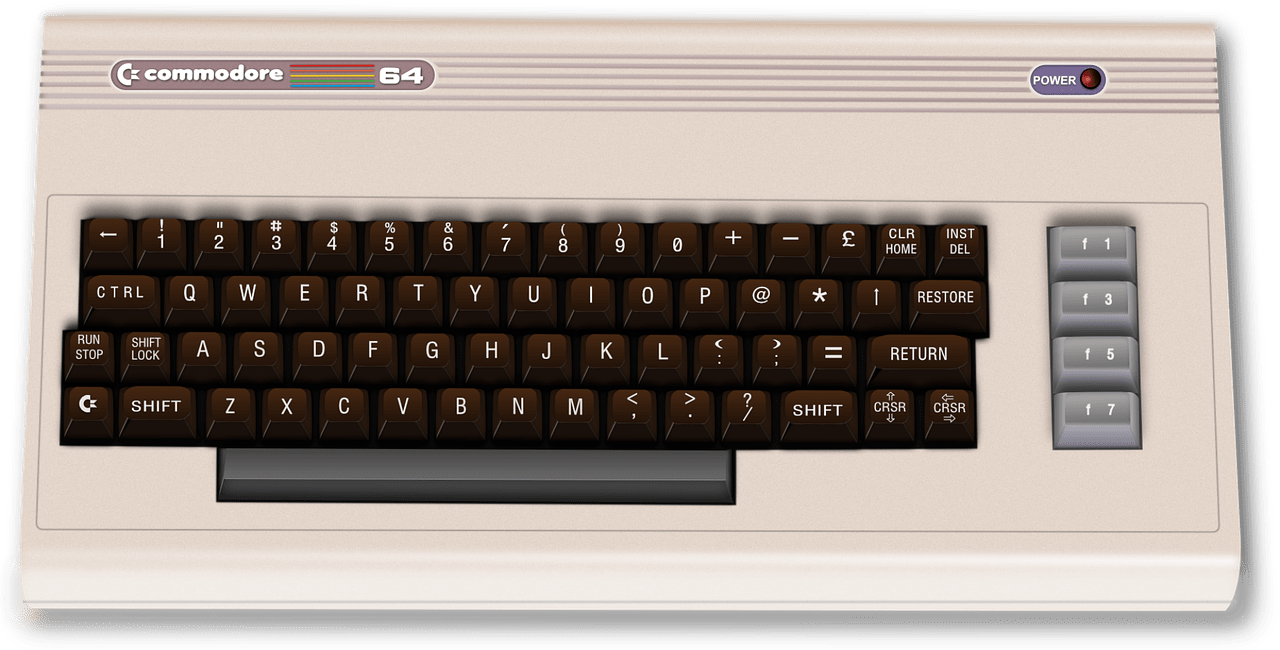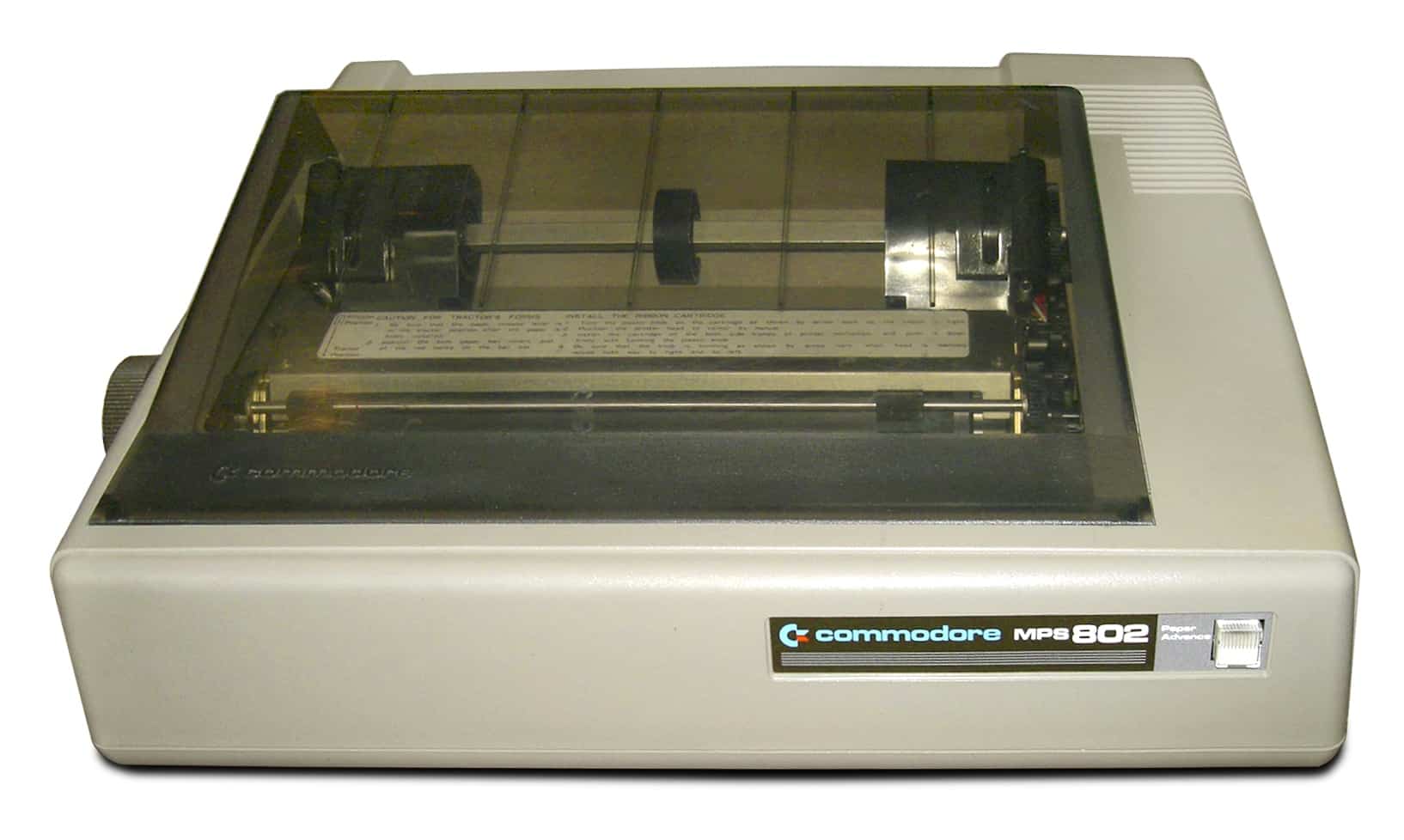Last Updated on 4 years by Christopher G Mendla
The Commodore 64 computer was introduced in 1982. This was my first computer, if you could call it that. The technology of 1982 seems like the stone ages compared to what we have available now. If you want to go back in time, check out this article.
The first Commodore 64 machines had a whopping 64k of memory and no external drive. You read that right, 64 KILOBYTES. 64000 or so bytes. The cost when they first came out was a mere $600 or so. That equates to about $1500 in 2017. The operating system was BASIC. The machine could be used for ‘productivity’ applications such as word processing and also for some games whose graphics would be cringeworthy today.
The system
The image below was the whole system. You got a keyboard and four function keys. The CPU was inside this unit.
The display
If you had extra cash, you could purchase a dedicated monocolor monitor. Later you could purchase a color monitor. If you were trying to keep your costs down, you could connect the video to a television.
The graphic above represents the TVs of the time. You had the normal channels of 1-12 and UHF channels. You would connect your Commodore 64 and set it to use either Channel 3 of 4, whichever wasn’t used in your area. The quality was less than spectacular. The lettering was often fuzzy.
Storage
In the configuration discussed above, you really couldn’t do much with the Commodore 64. You could write a BASIC program and execute it but there would be no way of saving it. You could purchase cartridges which would contain programs or games. The cartridges were read only so you still could not save anything. At that point, you might want to purchase a floppy disk drive. That would set you back $400 in 1982 which would be about $1000 in 2017. For that you got a drive that could read and write 170kb floppy disks. Most software was distributed on cartridges using the floppy to actually store data.

At this point, we are getting somewhere. We have our computer, we put out a hundred bucks or so for a word processing program and we have a means to store our work. However, we don’t have a way to print anything. Oh, and there was a problem that the drives ran really hot. Most users, including me, would build a base with a fan to help cool it down.
Printing
If you want to print, you needed to purchase a dot matrix printer. These were expensive and used fan fold paper. You could not do something like a resume on them as the quality was basic at best. The original printers used 9 pins. The later 24 pin printers boasted “Near Letter Quality” printing. Some of those could actually produce acceptable documents although it was still best to take resumes to a printer. Most of these printers used pin fed fan-fold paper. This was a continuous series of pages. The paper had a series of holes on each side that was used to advance the paper. The strips with the holes could be detached.
With the setup so far, you could use a word processor to create and save a document and print it. You could not switch applications as that would usually require shutting down and changing the program cartridges. If you used your television as a monitor, you had spent around $2000 in 1982 dollars which would be about $5300 in 2017 dollars.
Communications
There was no such thing as the internet at that time. It simply was not available. Public internet was not available until 1989 and then it was limited. You could purchase a modem which would allow you to connect to other computers. These used sound to communicate over telephone lines. There were Bulletin board services that covered every available topic. You could join the boards, most of which were free, and communicate with other people. There was also some primitive access to things like weather forecasts.
The process for connection was that you would set up your terminal software. Then dial the number you wanted. You could save numbers for connecting again later. The modem would then dial and you would hear a ‘handshake’ similar to that of a fax machine. If there was a connection, you could log onto the board. The first modems were 300 baud. That was painfully slow. Later modems were 1200 and 2400. After that, DSL which was an early high speed connection, began to be offered by the phone companies. Oh, and if you had call waiting and didn’t disable it, you would find your connection terminated if you got an incoming phone call. Also, no one else could use the line while you were using a modem. This was well before the days of cell phones.
Here is an example of how a modem connection sounded.
Usefulness
What was I able to do with my $5000 plus investment and Commodore 64 ?
- Edit and publish a 2 page newsletter for the Coast Guard Auxiliary once a month.
- Play a text based game that simulated a B1 bomber attacking Soviet targets. I did hack that by getting the target coordinates and creating a map with relative locations of the targets and circles representing the Soviet anti aircraft sites (They shot nukes at you as they would in real life).
- Wasted hours of my life playing a game where you had to fly out of a space station and complete a mission. Most of the time I hit the hangar doors on exiting and had to reboot.
- Wrote programs in basic.
- Wrote some programs in Assembly language.
- Connected to various bulletin boards.
Yep, Five grand in today’s dollars well spent. Actually, it was worthwhile as a learning experience.
Images
- Floppy drive Author Original photograph by Nathan Beach, http://www.nathanbeach.com/, minor alterations by Ubcule.
- Pin fed paper By LithiumFlash (Own work) [CC BY-SA 4.0 (https://creativecommons.org/licenses/by-sa/4.0)], via Wikimedia Commons





